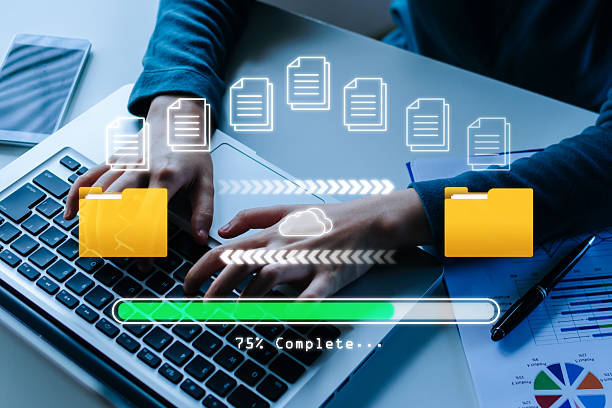What is On-Page SEO?

In today’s competitive web world, a strong presence in search results is vital for every business.
This is where the concept of #On_Page_SEO, or #On_Site_Optimization, comes into play.
On-page SEO is the process of optimizing elements of a web page to improve its ranking in search engines and attract more traffic. Unlike off-page SEO, which deals with activities outside the website, this part of SEO is entirely under your control and includes optimizing content, structure, HTML code, and page user experience.
The importance of on-page SEO for online success is undeniable; search engines like Google understand the content by thoroughly analyzing the internal elements of a page and assess its relevance to user queries.
A strong implementation in search engine optimization can help your pages rank higher for relevant keywords and attract more users.
This comprehensive guide aims to cover all aspects of on-page SEO in an educational and explanatory manner, from basics to advanced techniques, so you can have a powerful online presence.
This ensures that your site is not only understandable to search engine bots but also provides an excellent user experience for visitors.
Does your current corporate website provide a worthy image of your brand and attract new customers?
If not, turn this challenge into an opportunity with Rasav’s professional corporate website design services.
✅ Significantly improves your brand’s credibility and image.
✅ Paves the way for attracting new leads and customers for you.
⚡ For free and expert consultation, contact Rasav now!
The Role of Keywords in On-Page SEO
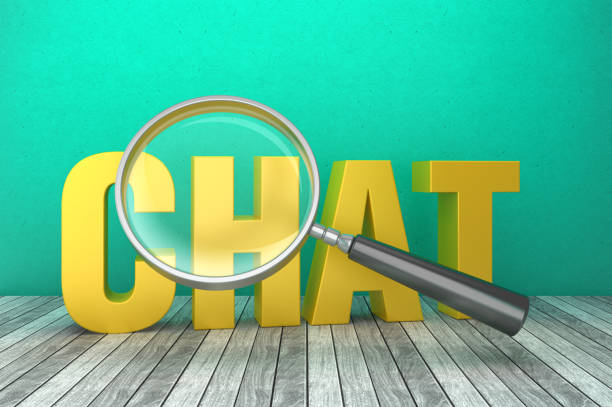
Keywords are the cornerstone of any successful on-page SEO strategy.
The correct selection and use of keywords help search engines understand the main topic of your content and link it to relevant user queries.
To begin, comprehensive and precise keyword research is essential.
This research involves identifying phrases that your target audience types into Google to find products, services, or information similar to yours.
Tools such as Google Keyword Planner, Ahrefs, and Semrush can be of significant help in this process.
After identifying primary and secondary keywords, the next step is to strategically employ them in various elements of your page.
The most important places for keyword placement include the page title (Title Tag), meta description (Meta Description), headings (H1, H2, H3), content text, image names and their alt attributes, and the page URL.
Natural and logical use of keywords in content is very important; keyword stuffing, which can lead to penalties from Google, must be strictly avoided.
An expert approach and guidance for keyword placement ensures improved rankings in search results, while keeping your content engaging and readable for users.
Remember that the main goal of on-page SEO is to provide the best answer to user search needs.
Content and Structure Optimization for On-Page SEO

Content is king, and in the discussion of on-page SEO, this phrase takes on a special meaning.
Content quality and structure are crucial factors in ranking web pages. Search engines look for deep, comprehensive, unique, and valuable content that answers user questions and satisfies their needs.
To achieve this, ensure your content is sufficiently long (typically at least 500-1000 words for comprehensive articles), has correct grammar and no spelling or writing errors, and provides accurate and up-to-date information.
Using appropriate headings (such as H1 for the main title and H2, H3 for subheadings) helps organize content and improves its readability, both for users and search engine bots.
Each heading should clearly indicate the relevant section and, if possible, include related keywords.
Another key aspect of on-page SEO is the use of internal linking.
By linking related pages within your website, you can both improve the user experience (by guiding users to relevant content) and distribute Page Authority throughout the site.
Below is an educational guide table for examining on-page SEO elements in content:
| Element | Description | Importance in On-Page SEO |
|---|---|---|
| Title Tag (تگ عنوان) | The most important page title displayed in search results. | Most impact on ranking and click-through rate (CTR). |
| Meta Description (توضیحات متا) | A short summary of the content seen below the title in search results. | Indirect impact on ranking, but very effective on CTR. |
| Heading Tags (H1-H6) | Headings for organizing content and improving readability. | Helps search engines understand content structure. |
| URL Structure (ساختار URL) | Web page address. | Should be short, descriptive, and include the keyword. |
| Content Quality (کیفیت محتوا) | Depth, comprehensiveness, uniqueness, and value of content. | Basis for user attraction and high ranking. |
| Internal Links (لینکهای داخلی) | Linking related pages within the site. | Distributes page authority and improves UX. |
By observing these points, optimizing content and structure for on-page SEO not only helps search bots better understand your content but also provides a better user experience for visitors, leading to increased dwell time and reduced bounce rate.
Technical On-Page SEO Optimization
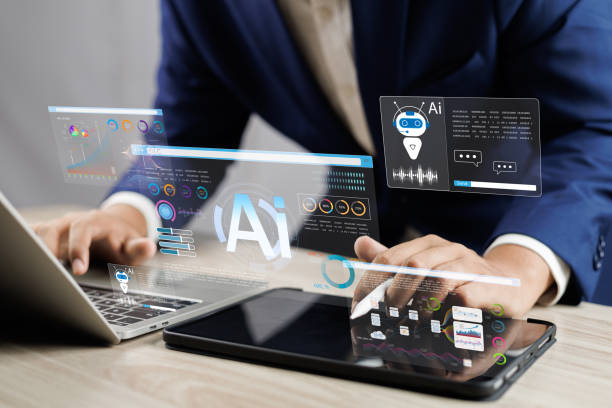
The technical aspects of on-page SEO are like the backbone of a website, allowing search engines to easily find, index, and rank your pages.
One of the most important of these aspects is site loading speed.
Users and search engines both prefer fast sites.
Slow sites can increase bounce rates and negatively impact your SEO ranking.
To improve speed, you can compress images, utilize browser caching, and optimize JavaScript and CSS codes.
Google PageSpeed Insights tools can be a good guide in this regard.
Responsive Design and mobile compatibility are also crucial ranking factors, as most searches today are conducted via mobile devices.
Your site must display correctly on all screen sizes and be easy to use.
Another key technical element is the URL structure.
URLs should be short, readable, descriptive, and include the page’s main keywords.
This not only helps with on-page SEO but also allows users to know the page’s content before clicking.
Schema Markup also helps search engines better understand your content and display it as Rich Snippets in search results, which can significantly increase your click-through rate.
Optimizing the robots.txt file to control bot access to the site and creating XML Sitemaps to help all pages be correctly indexed by search engines are other important aspects of technical on-page SEO.
These points ensure that your site is in its best technical state to attract search engines and users.
Are you dissatisfied with the low conversion rate of visitors to customers on your e-commerce site?
With professional e-commerce website design by Rasav, solve this problem forever!
✅ Increase visitor-to-customer conversion rate
✅ Create an excellent user experience and build customer trust
⚡ Get free consultation
The Importance of User Experience (UX) in On-Page SEO
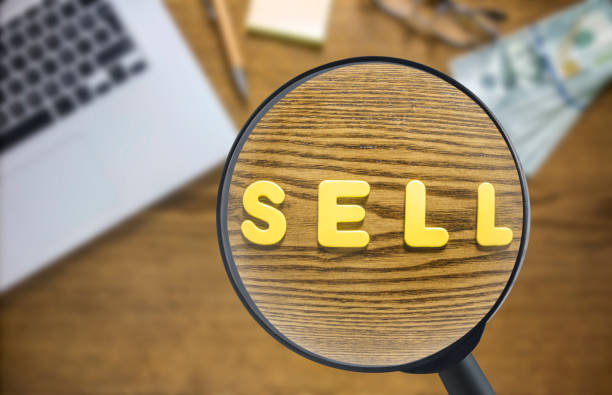
User Experience (UX) plays an undeniable role in the success of on-page SEO.
Google and other search engines are increasingly emphasizing user experience signals for page ranking.
An excellent user experience means a site that loads quickly, is easy to navigate, has clearly organized content, and displays well on any device.
When users are satisfied with your site, they spend more time on it (Dwell Time), view more pages, and the bounce rate decreases.
These signals tell search engines that your content is valuable and relevant, which in turn leads to improved rankings.
To improve UX in line with on-page SEO, pay attention to the following:
- Site Speed: As mentioned earlier, loading speed is important.
Today’s users are impatient, and a slow site quickly drives them away. - Easy Navigation: Menus should be clear and logical.
Users should be able to easily find what they are looking for.
Using breadcrumbs can also be very useful in this regard. - Content Readability: Using readable fonts, sufficient spacing between lines and paragraphs, and relevant images and videos helps improve readability.
Explanatory content should be understandable even to novice users. - Responsive Design: Ensure your site displays well on all devices, from desktop to mobile and tablet, providing a consistent user experience.
By focusing on these aspects, you not only improve your site’s user experience but also send positive signals to search engines, strengthening your site’s position in search results.
This is an analytical approach that leads to tangible SEO results.
The Role of Internal Linking in Ranking Improvement

Internal linking is one of the most powerful tools in the on-page SEO toolkit that is often overlooked.
This process involves creating links from one page on your website to another page on the same website. The main goal of internal linking is to improve site navigation for users and also to distribute “link juice” or “Page Authority” throughout the site.
When a page with high authority (such as the homepage or a popular article) links to another page, it passes some of this authority to the destination page, helping it achieve a higher ranking in search results.
For an effective internal linking strategy, pay attention to the following points:
- Using Relevant Anchor Text: Anchor text, or the clickable text of the link, should be descriptive and relevant to the content of the destination page and include that page’s target keyword.
Avoid generic anchor texts like “click here.” - Linking to Relevant Pages: Always link related pages to each other.
This helps search engines understand the thematic connection between different pages on your site. - Linking Depth: Try to link important and deep pages of your site from higher-ranked pages to ensure they are discovered and indexed by search engines.
- Contextual Links: The best internal links are those that appear naturally within the content and provide added value to the reader.
A strong internal linking structure, in addition to helping improve on-page SEO, also enhances the user experience, as users can easily access related content.
This is a fundamental educational guide for anyone who wants to make the best use of their site’s potential.
Advanced On-Page SEO Tools and Techniques

To be truly successful in on-page SEO, merely knowing the basics is not enough; you need the right tools and advanced techniques to help you identify problems, monitor performance, and discover new opportunities.
This section introduces some of the most important specialized tools and techniques that can revolutionize your on-page SEO strategy.
One of the vital tools is Google Search Console.
This free tool provides valuable information on how Google views your site, crawl errors, indexing issues, keyword performance, and backlinks.
Regular use of it is essential for diagnosing and resolving on-page SEO issues.
Paid tools like Ahrefs, Semrush, and Screaming Frog also provide more advanced features for on-page SEO.
Screaming Frog is a web crawler that allows you to examine your site from a search engine’s perspective and identify common issues such as broken links, missing or duplicate title tags, and redirect problems.
More advanced techniques include optimizing for AMP (Accelerated Mobile Pages) for ultra-fast mobile loading and implementing structured data (Schema Markup) to help search engines better understand your content and display rich snippets in search results.
These techniques can significantly increase your click-through rate.
Below is a comparative news and analytical table of some popular SEO tools:
| Tool Name | Main Features (On-Page SEO Related) | Advantages | Disadvantages |
|---|---|---|---|
| Google Search Console | Crawl reports, keyword performance, indexing issues. | Free, direct data from Google. | Limited competitor analysis. |
| Ahrefs | Keyword analysis, backlinks, site SEO, content SEO. | Comprehensive, strong backlink data. | Expensive. |
| Semrush | Keyword analysis, technical SEO, competitor analysis, content SEO. | Multipurpose, wide coverage. | Expensive, complex user interface for beginners. |
| Screaming Frog | Site crawling, identifying broken links, title tags, redirects. | Powerful technical tool, high accuracy. | Requires technical knowledge, non-intuitive user interface. |
Mastering these tools and techniques will enable you to optimize your site’s on-page SEO more professionally and efficiently, and outperform competitors.
Fixing Common On-Page SEO Errors

Even the best on-page SEO strategies may encounter challenges and errors.
Identifying and resolving these errors is crucial for maintaining and improving your site’s ranking.
Here, we discuss some of the most common issues in on-page SEO and guidance on how to fix them.
Duplicate Content: This is one of the biggest enemies of on-page SEO.
When similar or identical content exists across multiple URLs on your site or even on other sites, search engines become confused about which version to index and rank.
To resolve this, you can use the tag rel="canonical" to point to the original version of the content, or use 301 redirects to consolidate similar pages.
Broken Links: Internal or external links pointing to deleted or non-existent pages (404 errors) disrupt user experience and diminish your site’s credibility with search engines.
Use tools like Google Search Console or Screaming Frog to identify these links and replace them with correct ones or remove them.
Thin Content: Pages with very short, superficial, or no added value content for users.
This type of content can seriously harm your on-page SEO.
The solution is to expand existing content, add more information, and make it deeper and more comprehensive to fully meet user needs.
Lack of Optimization for Title Tags and Meta Descriptions: These tags are among the first things both users and search engines see.
If the title is duplicate, too long or too short, or does not include the main keyword, you’ve missed a big opportunity.
Ensure that each page has a unique, engaging title and meta description that includes relevant keywords.
This regular analysis and error resolution will form a solid foundation for sustained success in on-page optimization of your site.
Does your company’s website create a professional and lasting first impression in the minds of potential customers? Rasav, with professional corporate website design, not only represents your brand’s credibility but also opens a path for your business growth.
✅ Create a powerful and trustworthy brand image
✅ Attract target customers and increase sales
⚡ Get free consultation
Continuous Evaluation and Improvement of On-Page SEO
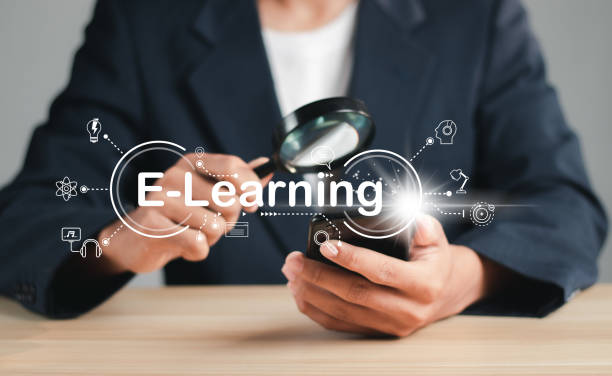
On-page SEO is not a one-time process but a continuous and ongoing effort.
The world of SEO is rapidly changing, and to maintain and improve your site’s ranking, you must regularly evaluate and optimize your on-page SEO performance.
To assess success, using analytical tools like Google Analytics and Google Search Console is crucial.
Google Analytics allows you to monitor site traffic, referral sources, user behavior on the site (such as dwell time, bounce rate, and pages visited), and conversion rates.
By reviewing this data, you can identify which pages are performing well and which ones need improvement.
For example, if a particular page has a high bounce rate, it might indicate unsuitable content or a poor user experience on that page, requiring a more detailed investigation in the realm of on-page SEO.
Google Search Console provides information about the keywords users employ to find your site, average page rankings, and crawling and indexing errors.
This data helps you identify and fix technical on-page SEO issues and discover new opportunities for keyword optimization.
In addition to data monitoring, A/B testing can also be very useful in continuous on-page SEO improvement.
By testing different versions of title tags, meta descriptions, content, or design elements, you can see which changes lead to improvements in click-through rate, dwell time, or conversion rate.
This analytical and explanatory approach allows you to continuously refine your on-page SEO strategy and surpass competitors.
Continuous optimization not only maintains your ranking but also contributes to the sustainable and long-term growth of your site.
Future Trends and Outlook of On-Page SEO

The world of on-page SEO is not static and is constantly evolving.
To maintain a competitive advantage, understanding future trends and new perspectives in this field is essential.
One of the most significant emerging trends is the increasing role of Artificial Intelligence (AI) in Google’s algorithms. Algorithms like RankBrain, BERT, and more recently MUM, allow Google to understand content more intelligently, not just based on keywords, but on the user’s true intent and semantic relevance.
This means that your content should not only contain keywords but also address the topic comprehensively and provide complete answers to potential user questions.
Voice search has also become an important trend.
With the increasing use of voice assistants like Google Assistant and Siri, optimizing for Voice Search has gained increasing importance.
Voice searches are typically longer, more conversational, and more question-like.
Therefore, your on-page SEO should include direct and concise answers to common questions and use natural language.
Video SEO is another growing area.
With the increasing popularity of video content, optimizing videos for search engines (through titles, descriptions, tags, and text transcripts) can be a significant source of traffic and plays an important role in on-page SEO.
With these changes, does on-page SEO become more complex or simpler? This is a thought-provoking content whose answer depends on your perspective.
However, one thing is certain: focusing on providing real value to the user, producing high-quality and comprehensive content, and continuously improving user experience will always remain the core of on-page SEO, regardless of algorithmic changes.
This informative and engaging perspective helps you always stay one step ahead of the competition.
Frequently Asked Questions
| No. | Question | Answer |
|---|---|---|
| 1 | What is On-Page SEO? | On-page SEO refers to a set of actions performed within a website to optimize its pages to achieve better rankings in search results. |
| 2 | What is the most important factor in on-page SEO? | High-quality, relevant, and comprehensive content that addresses user needs is the most important factor in on-page SEO. |
| 3 | What role does the Title Tag play in on-page SEO? | The title tag is one of the most important factors that tells search engines and users what the page content is about. It should include the main keyword and be engaging. |
| 4 | How important is the Meta Description tag? | Although it doesn’t directly impact rankings, it is very effective on the click-through rate (CTR) in search results and encourages users to visit the page. |
| 5 | How are images optimized in on-page SEO? | By using an appropriate alt tag, compressing image size to increase loading speed, and meaningful naming of the image file. |
| 6 | What is the importance of using headings (H1, H2, H3) in on-page SEO? | Headings help structure content, improve readability, and assist search engines in understanding the hierarchy and sub-topics of the content. |
| 7 | What is Internal Linking and what are its benefits? | Internal linking means creating links between different pages of a website. This helps distribute authority, improve user navigation, and assist search engine crawling. |
| 8 | Where should the Focus Keyword be placed on the page? | The main keyword should be in the title tag, meta description, H1, first paragraph, and naturally throughout the text and, if possible, in the URL. |
| 9 | What effect does copied or duplicate content have on on-page SEO? | Duplicate content can harm site rankings and confuse search engines about which version is original, potentially leading them to classify it as spam. |
| 10 | How important is page loading speed in on-page SEO? | Page loading speed is an important ranking factor and directly impacts user experience. Slow pages increase user bounce rates. |
And other advertising agency services from Rasa Web in the field of advertising
Smart Custom Software: A new service to increase user engagement through SEO-driven content strategy.
Smart Sales Automation: An effective tool for increasing sales through user experience customization.
Smart Customer Journey Map: A new service for increasing digital branding through intelligent data analysis.
Smart Social Media: An effective tool for online growth through Google Ads management.
Smart Conversion Rate Optimization: A specialized service for growing customer acquisition based on precise audience targeting.
And over hundreds of other services in the field of internet advertising, advertising consultation, and organizational solutions
Internet Advertising | Advertising Strategy | Advertorials
Sources
On-page SEO training on Aparat
Comprehensive On-page SEO article by Sarv SEO
Mihan Web On-page SEO optimization tips
Ghofran’s Complete On-page SEO Guide
? Rasav Afarin, a leading digital marketing agency, paves the way for your business success. From professional e-commerce website design to comprehensive SEO strategies, we are ready to distinguish your brand online and take it to the top.
📍 Tehran, Mirdamad Street, next to Bank Markazi, Southern Kazeroon Alley, Ramin Alley, No. 6

